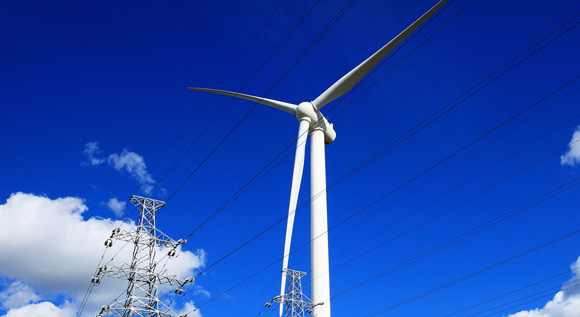Ministry launches “Electricity 2030” debate and sets the course for Germany’s future electricity supply
A lot has been done, a lot still has to be done. Give us your ideas on how we should best address the challenge of ensuring energy security at affordable prices.
 © istockphoto.com/NI QIN
© istockphoto.com/NI QIN
Autumn has come. The weather is changing, and so is the amount of electricity from renewables. More sunshine means more solar power, more wind means more wind energy. All the while, the overall share of renewables in our electricity system is growing. At present, renewables account for some 33 per cent of our electricity supply. They are a key component of our new, climate-friendly energy system, which is to deliver energy security at affordable prices.
To this end, the Federal Ministry for Economic Affairs and Energy has put forward a number of important pieces of legislation, starting with the 2017 Renewable Energy Sources Act, to the Electricity Market Act , to the Act on the Digitisation of the Energy Transition.
As you can see, the course has been set. Now we need to plan our next steps.
Much has been achieved and there’s a lot in the pipeline
We are aiming to largely cut out harmful greenhouse gas emissions by 2050 by investing in efficiency technologies and renewable energy sources. And we are planning to do this in a way that helps Germany’s industrial base to become even more competitive. Solar and wind power are well on their way to becoming our most important energy sources.
We need to bear in mind just how long investment cycles are in the energy industry. The heating and building systems and the power plants built in the 2020s will continue to shape our energy system of the 2050s.
This is why it is so important that we get the investment framework right, so that we won’t have to foot the bill for costly adjustment work further down the road.
Today’s debate about the energy system for the future
Time to think about the future. The Federal Ministry for Economic Affairs and Energy wants to use the “Electricity 2030” debate to engage in a public debate about the action that is needed in the years to come if we are to ensure that our electricity prices remain affordable as we proceed with our energy transition. The Ministry kicked off the debate by publishing an input paper entitled “Electricity 2030 – long-term trends and what we need to do over the coming years”.
Electricity in the spotlight
The input paper highlights twelve trends that will help us put in place an electricity system that is low-cost, secure and climate-friendly. The paper shows that wind and solar power are becoming ever more important components of our energy system, gradually turning into our most important source of energy, whilst continuing to deliver energy security at affordable prices. This is thanks to the three-pronged approach underpinning the energy transition in Germany:
1. “Efficiency first”: Our priority must be to reduce our overall energy consumption.
2. Direct use of renewables. The bulk of the energy that we still need after boosting our performance on energy efficiency is to be generated from renewables including solar thermal energy and wind and solar power. This is to be achieved by each sector individually.
3. Sector coupling (to find out more about that, please click here): Once our energy consumption has been reduced across all sectors, we will increasingly make use of electricity from renewables – especially wind and solar power – to heat our buildings, power our vehicles, and to keep our industrial sector powered up.
This won’t happen by itself
At the same time, our new, secure, affordable and climate-friendly energy system won’t just build itself. If we want the trends that we set out in the input paper to materialise in practice, we will need to continue to adjust our energy framework. This is why, for each trend, the “Electricity 2030” paper lists a number of tasks to be completed by 2030. The paper also sets out a number of key questions that need to be discussed.
The debate will centre on how to complete what we call the “electricity market 2.0” – an electricity system which is increasingly flexible, able to balance out supply and demand, and which delivers energy security at affordable prices. Such a system will need to be based upon highly developed national and European grids, pan-European market coupling between the various national electricity markets, and it will need to make use of the opportunities afforded by digitisation.
Parallel to this, the electricity market must evolve into an “electricity market 2.0”. The input paper raises the question as to what can be done to make wind and solar power more competitive options for the heating and transport sectors, which continue to be dominated by fossil fuels.
Give us your input – the consultation will be open until 31 October 2016
What do our stakeholders have to say about the tasks and in response to the guiding questions listed in the “Electricity 2030” input paper? The debate is open to anyone wishing to participate. And we need your input – after all, the energy transition affects everyone in our society. Please submit your comments by sending them to strom2030@bmwi.bund.de by 31 October 2016. The results will be fed into a final report to be presented in 2017.
Parallel to “Electricity 2030”, you can also participate in a public consultation on the “Energy Efficiency Green Paper” (in German only), which sets out guiding questions around the issue of energy efficiency and how best to cut our energy consumption in the long term.

